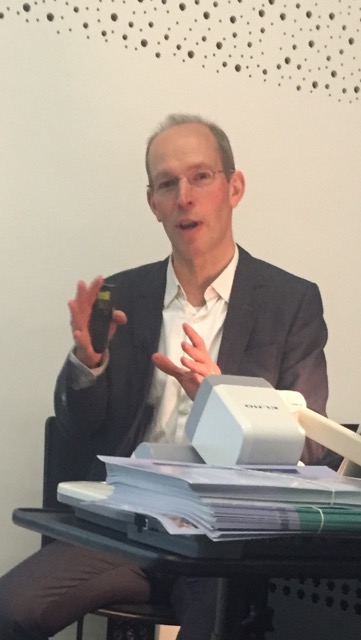On 2nd March Nick Hopwood of the University of Cambridge gave the HG Wells lecture on ‘The many births of the test-tube baby’. It is generally accepted that following in vitro fertilization in Oldham, Louise Brown became the world’s first ‘test-tube baby’. Her birth, thanks to 2010 Nobel prize winner Robert Edwards, Patrick Steptoe and their team, was a major international news story in July 1978. Following much apprehension about such ‘implants’, the press celebrated Louise, a ‘miracle of ordinariness’, as making medical history. This was, however, far from the first claim to a test-tube baby; since 1944, various researchers had reported fertilizing human eggs to produce embryos and even infants. Nick highlighted two points about these reports. Some were made in journal articles, some in the general press and some in both. And some later announcements maintained far less than some early ones, a sign that standards changed. In 1969, for example, when Edwards et al. reported ‘early stages of fertilization’, not all specialists accepted even this, while others dismissed it as old hat. Rather than taking us through a litany of claim and counter-claim Nick gave us a deep insight into the manner, means and enthusiasm with which the claims were made and, equally the manner, means and vitriol with which opponents and colleagues assessed and contested them. Nick’s analysis focused on changes, on the one hand, in standards of evidence, and on the other, in norms of communication, especially the ways that scientists used not only learned journals and textbooks, but also newspapers and television. The most striking example was the birth of Brown herself, of which for many months the Daily Mail provided the fullest account.
For nearly 2 hours of talk and discussion, Nick intrigued a 50-strong audience with fresh perspectives on this, the founding achievement of reproductive biomedicine. He helped us grasp why some of the claims were more credible than others and why, after a far from certain beginning, and a good deal of controversy, the world agreed that Louise was ‘the one’. Nick ended with the point that, for impactful discoveries such as IVF, journal articles, however desirable, may be neither sufficient nor necessary successfully to stake medical and scientific claims. The Centres for the History of the Sciences (CHotS) and for Interdisciplinary Studies of Reproduction (CISoR) are incredibly grateful for Nick for his time and enthusiasm and hope to work together with him further in the future.
